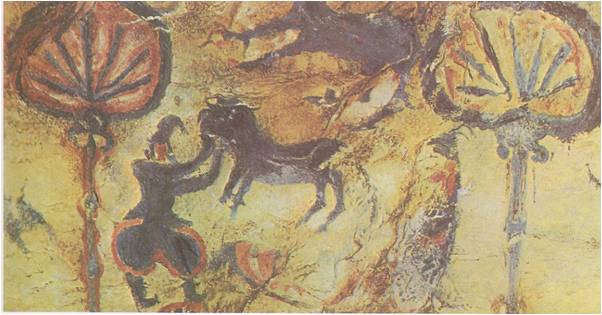THE Japanese islands — four large ones and many smaller ones — rise out of the Pacific Ocean to the east of China and Korea. They form a bow that bends from southwest to north for eleven hundred miles. The northern tip is at the same latitude as Montreal and the southern tip at that of Florida.
Long ago, the people of the islands noticed that the sun always seemed to rise out of the ocean. They named their land Nihon or Nippon, “the source of the sun.” To the Chinese, on the mainland of Asia, the sun often appeared to rise from the direction of the islands. So they, too, called the islands “the source of the sun.” In their language, this was jih-pen. While the islanders continued to call their country Nippon, people in other parts of the world borrowed the Chinese name and called it Japan.

Altogether, Japan is no bigger in area than Montana. It is so mountainous that only about a fifth of it can be farmed. Where the land is not too steep or rocky for farming, the soil is poor. Japan is fortunate in its climate. The southwestern part of the country has such a long growing season that farmers can raise two crops a year. Their main crop is rice, which yields more food per acre than almost any other food crop. The waters around Japan are full of fish. This is why Japan has been able to support a large number of people, even though it has so few natural advantages.
The Japanese belong to the same Mongoloid race as the Koreans, Manchurians, Mongolians and Chinese. They are shorter and often darker-skinned than their neighbors and their men grow beards more easily. Because of their smaller bodies, some scientists believe that their ancestors came from Southeast Asia. Other scientists disagree. Everyone knows how they got their face-hair. In the extreme north of Japan there still live the survivors of a primitive people called the Ainu, whose men grow beards as easily as Europeans. As a matter of fact, the Ainu look more like Europeans than Mongoloids and where they came from is still another puzzle. At some time in the past, however, the Ainu and an Asian people of Mongoloid stock must have married and had children. The Japanese people of today are the result.
THE TOMB CULTURE
Archeologists say that Stone Age men roamed the islands of Japan six or seven thousand years ago. Between 3000 B.C. and 2000 B.C.‚ some of them began to lead a settled life together. The Jomon people, as they are called, lived by hunting and by gathering roots and shellfish. In the third or second century before Christ, the Jomon culture gave way to the Yayio culture. The Yayoi people were probably in touch with China, most likely through the Han colonies in Korea. They knew about farming and introduced to japan the Chinese method of growing rice by flooding fields.

About the middle of the third century after Christ, a third way of life came to Japan. It was called the tomb culture, after the huge burial mounds of earth its People built. The tomb culture came from Korea, where it was customary to bury noblemen in similar earthen mounds — the higher the rank, the higher the tomb. These mounds show that Japan, too, was beginning to have an aristocracy, for it must have taken many workers to construct them. Some were as much as 1,500 feet long and 120 feet high.
Around the year 400, the archeological record ends and the historical record begins. Before that time, a group of adventurers from China had braved the perilous sea voyage to the islands and written an account of their visit. Rather rudely, they called their hosts wo, or “dwarf people.” The “dwarfs,” they reported, loved a good time and especially enjoyed drinking rice wine and liquor, but they also obeyed the law. They were great farmers and fishermen and expert spinners and wavers. They were divided into many classes, and a man’s class could be told by the designs tattooed on his face and body. Except for the tattoos, this description would fit the Japanese people at much later periods.
The Chinese visitors forgot to mention one very important Japanese trait: love of nature. Although their beautiful country was and is ravaged from time to time by typhoons, earthquakes, tidal waves and volcanic eruptions, the Japanese have always enjoyed the gentler side of nature. Then as now, they took pleasure in the sight of a waterfall, a mountain or a particularly stately tree.





